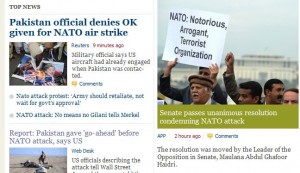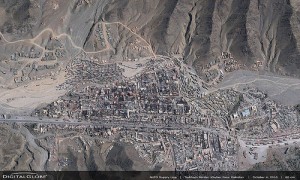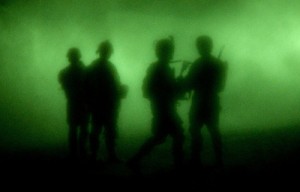Pakistan’s “Temoporary Campsite” at Center of NATO Border Post Attack Controversy

A partial screen-cap of the Express Tribune website on Friday, showing protesters and dominance of the news by the NATO attack.
The barrage of claims and counter-claims on what took place early Saturday morning just inside the Pakistani side of the Afghanistan-Pakistan border continues at a rapid pace. On Thursday, the Wall Street Journal published an article in which the US military claimed that Pakistan had given clearance for the attack. Despite the Journal claiming they were unable to get a response from Islamabad for the article, responses from Pakistan did not take long, and Pakistan claims that NATO did not contact Pakistan until after the raid was in progress and that incorrect location information was given in the first contact.
Citing only “US officials” and not giving any names, the Journal describes the joint US-Afghan commando operation that night as hunting Taliban militants in the border area when they came under fire:
The commandos thought they were being fired upon by militants. But the assailants turned out to be Pakistani military personnel who had established a temporary campsite, U.S. officials said.
According to the initial U.S. account from the field, the commandos requested airstrikes against the encampment, prompting the team to contact a joint border-control center to determine whether Pakistani forces were in the area, a U.S. official said.
The border-control center is manned by U.S., Afghan and Pakistani representatives who are supposed to share information and head off conflicts. But the U.S. and Afghan forces conducting the Nov. 26 commando operation hadn’t notified the center in advance that they planned to strike Taliban insurgents near that part of the border, the official said.
When called, the Pakistani representatives at the center said there were no Pakistani military forces in the area identified by the commandos, clearing the way for the Americans to conduct the airstrikes, the U.S. officials said.
Despite the Journal claiming that they could not get a response from Islamabad on this information, the Express-Tribune carries this response in a Reuters story: Read more →


